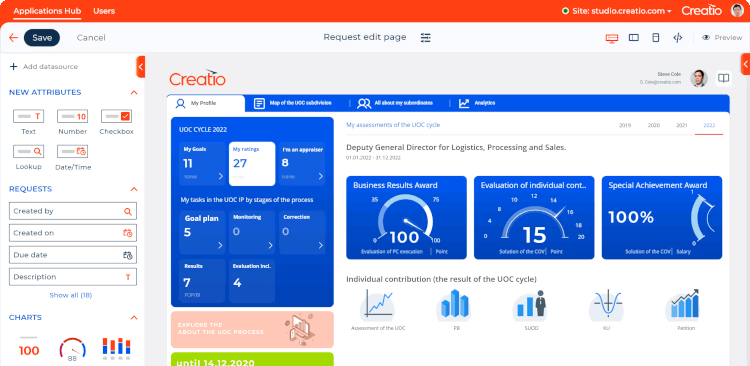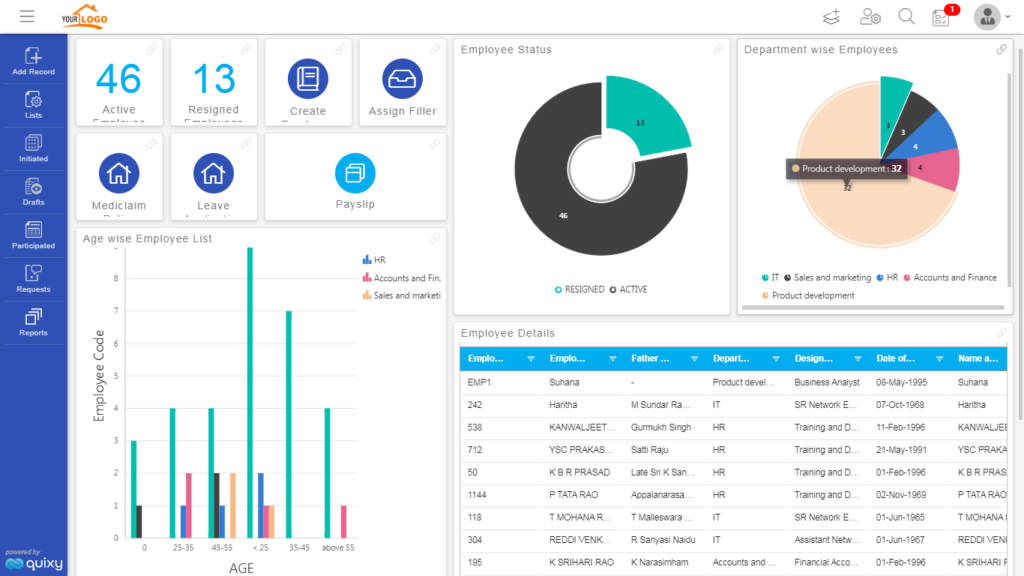Open the Power of No-Code for Open System Data Source Production
A Comprehensive Overview to Executing Scalable Data Sources Without the Demand for Coding Competence
In the modern landscape of information management, the ability to execute scalable databases without coding competence is becoming significantly vital for companies of all sizes. This guide aims to light up the procedure, focusing on easy to use tools and intuitive user interfaces that debunk database setup. By examining essential functions, efficient methods for execution, and best methods for ongoing administration, we will resolve how even non-technical users can with confidence navigate this complicated terrain. What are the vital components that can genuinely empower these users to leverage scalable databases properly? The solutions might redefine your approach to data monitoring.
Understanding Scalable Databases
In the world of modern information administration, scalable databases have actually become a critical option for companies seeking to manage increasing quantities of details efficiently. These databases are designed to fit growth by allowing for the smooth addition of resources, whether with straight scaling (including extra machines) or vertical scaling (updating existing equipments) This versatility is important in today's fast-paced electronic landscape, where information is created at an unmatched rate.
Scalable databases usually utilize distributed architectures, which make it possible for data to be spread out across multiple nodes. This circulation not just enhances efficiency but likewise supplies redundancy, guaranteeing information availability also in case of equipment failures. Scalability can be a vital aspect for various applications, including e-commerce platforms, social media networks, and large data analytics, where user need can fluctuate dramatically.
Furthermore, scalable data sources typically feature durable information consistency designs that stabilize performance and dependability. Organizations should consider their particular requirements, such as read and create speeds, data stability, and mistake resistance when selecting a scalable data source option. Ultimately, comprehending the underlying concepts of scalable data sources is essential for businesses aiming to thrive in a significantly data-driven world.
Key Attributes to Search For
When reviewing scalable data sources, several essential features are paramount to ensuring optimal performance and integrity. Consider the style of the data source. A distributed style can enhance scalability by permitting information to be kept throughout several nodes, facilitating smooth data accessibility and handling as need rises.
An additional important attribute is information dividing, which enables effective management of large datasets by splitting them right into smaller sized, extra convenient pieces (no-code). This technique not only improves performance but likewise simplifies resource allotment
Furthermore, try to find durable replication capabilities. This attribute makes certain information redundancy and high schedule, decreasing downtime throughout maintenance or unforeseen failings.
Efficiency surveillance tools are additionally essential, as they provide real-time insights into system health and wellness and operational performance, permitting for prompt modifications to maintain optimum performance.

User-Friendly Database Devices
Simplicity is a crucial component in the layout of user-friendly database tools, as it boosts accessibility for users with differing degrees of technical competence. no-code. These devices prioritize user-friendly user interfaces, allowing individuals to develop, take care of, and inquiry databases without requiring comprehensive shows expertise
Secret functions commonly include drag-and-drop performance, visual data modeling, and pre-built templates that simplify the configuration procedure. Such devices often offer guided tutorials or onboarding procedures that assist in customer involvement and decrease the discovering contour. In addition, seamless assimilation with prominent data resources and solutions guarantees that read this users can conveniently import and export data, better simplifying procedures.

Additionally, durable support and community resources, such as discussion forums and documentation, improve the user experience by supplying assistance when needed. In general, straightforward database devices encourage companies to harness the power of scalable databases, making information administration obtainable to everyone involved.
Step-by-Step Execution Overview
Exactly how can companies effectively execute scalable databases to fulfill their expanding data needs? The procedure starts with recognizing particular data needs, consisting of the quantity, selection, and rate of information that will be refined. Next, companies need to examine easy to use data source devices that use scalability features, such as cloud-based remedies or handled database solutions.
As soon as the ideal device is chosen, the next step entails configuring the database setting. This consists of establishing instances, specifying user permissions, and developing information structures that line up with company purposes. Organizations must then move existing data into the new system, making sure data honesty and marginal interruption to operations.
Post-migration, carrying out extensive screening is important; this includes performance screening under different tons problems to guarantee the system can handle future development - no-code. Furthermore, it is essential to train personnel on the database management user interface to promote seamless usage
Finest Practices for Administration
Efficient monitoring of scalable databases calls for a calculated strategy that focuses on recurring tracking and optimization. To attain this, companies must apply robust surveillance devices that give real-time understandings right into data source performance metrics, such as question response times, resource use, and purchase throughput. Frequently analyzing these metrics can aid identify traffic jams and areas for enhancement.

Normal back-ups and disaster recuperation plans are vital to guard data integrity and schedule. Developing visit homepage a regular for testing these back-ups will ensure a trusted recuperation procedure in instance of an unexpected failure.
Moreover, performance adjusting ought to be a constant process. Adjusting indexing methods, optimizing inquiries, and scaling resourcesâEUR" whether up and down or horizontallyâEUR" will assist keep optimal efficiency as usage demands evolve.
Lastly, cultivating a society of expertise sharing among team members will make it possible for continual discovering and adaptation, making certain that the monitoring of scalable databases remains reliable and effective with time.
Conclusion
In verdict, the application of scalable data sources can be efficiently attained without coding know-how via the utilization of straightforward devices and instinctive interfaces. By sticking to the laid out approaches for setup, data migration, and efficiency screening, people can browse the intricacies of data source administration with ease. Highlighting ideal practices for recurring upkeep and collaboration further improves the ability to manage scalable databases successfully in a rapidly developing data-driven setting.
In the modern landscape of information administration, the capacity to implement scalable databases without coding knowledge is becoming significantly necessary for organizations of all sizes.In the world of modern-day information monitoring, scalable databases have emerged as an important option for companies seeking to manage raising quantities of info effectively.Furthermore, scalable data sources frequently include durable data consistency versions that stabilize performance and integrity.Exactly how can companies efficiently apply scalable data sources to fulfill their growing information requirements? Next off, companies should examine straightforward data source devices that use scalability functions, such as cloud-based options or handled data source services.